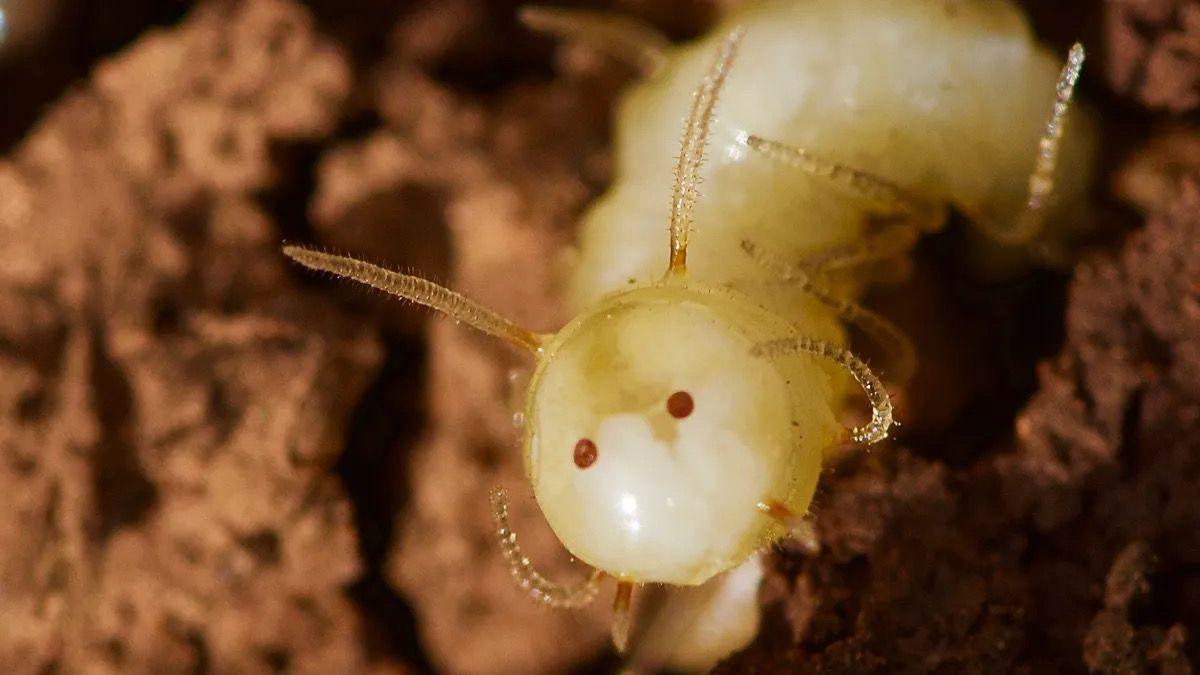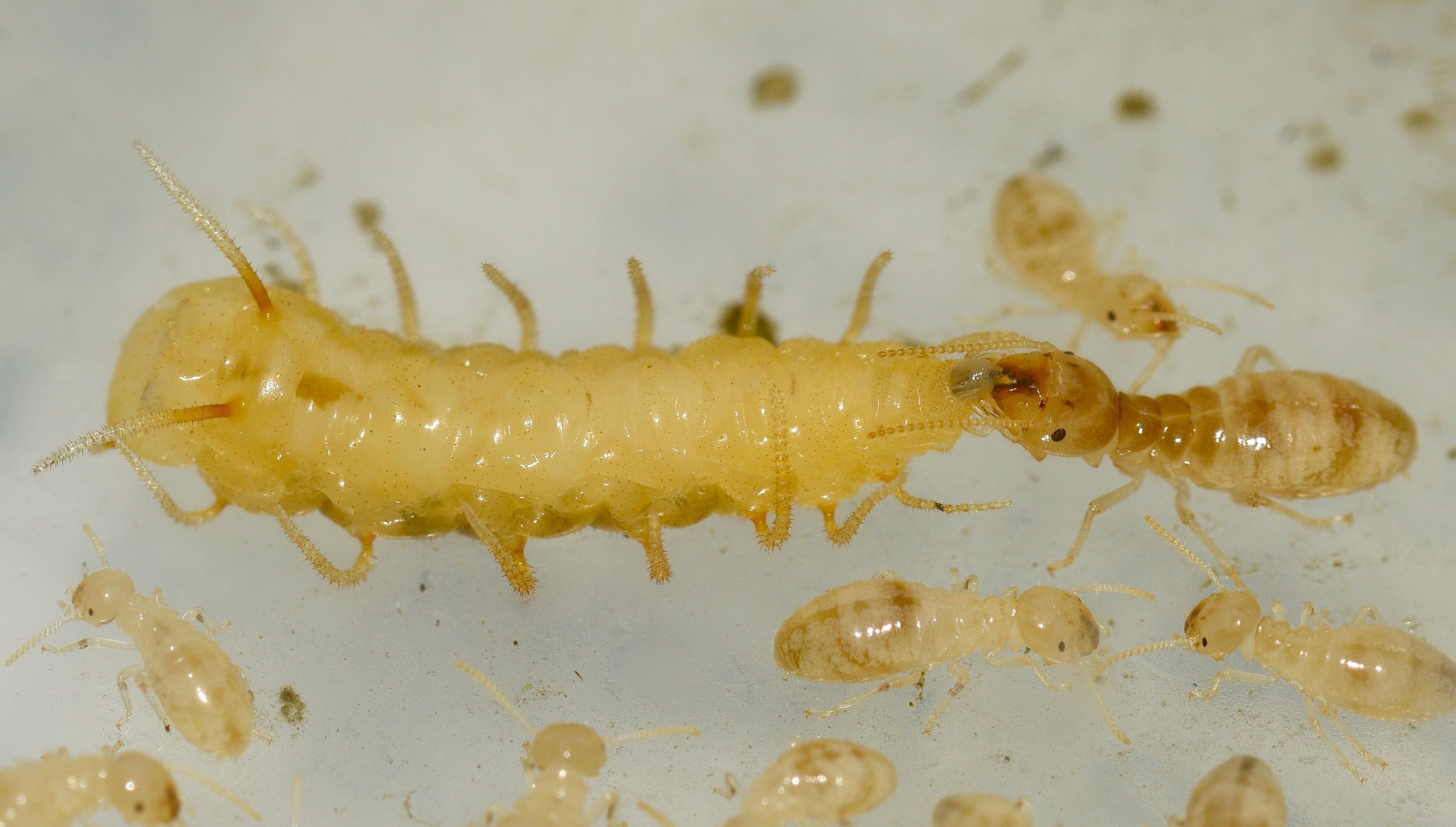Bottom with a face! These maggots are masters of disguise

That might look like a face, but it’s actually a maggot’s bottom!
- Published
This tiny, sneaky maggot has developed a special technique that might surprise you.
Previously undiscovered blow fly larvae (a baby fly) were found in the mountains of Morocco, and have evolved so their backsides resemble a termite head.
In other words, their bottoms look like they have little faces on them.
Scientists believe this allows the larvae to sneak into termite colonies to steal their food, all undetected.
- Published21 November 2018
- Published14 February 2014
- Published1 August 2024
Soldier termites are known for aggressively guarding their colonies, attacking any invaders.
But the disguise is so convincing that the termites think the maggots are part of their colony.
In fact, the termites even groom the maggots like they're one of them! Talk about a "bum" deal for the termites.
Researchers discovered the larvae's sneaky trick by accident while looking for ants.
When they lifted a stone in Morocco's Anti-Atlas mountains, they found a termite mound with two never-seen-before maggots living inside.
Lead author Roger Vila, a scientist at the Institute of Evolutionary Biology in Spain, said: "It must be an extremely rare species, because we have made three more expeditions in that area and, despite lifting hundreds of stones, we found only two more".

The discovery was found in Morocco’s Anti-Atlas mountains
But the maggots' disguise isn't just about looking like termites.
According to the study, these larvae have adapted their smells, senses, and even breathing holes to mimic termites too. Their holes are cleverly shaped to look like termite eyes, and their sensory organs are just like termite antennae.
It's like a whole termite costume!
And for their next trick, the maggots have developed a smell that's exactly like termites.
"They smell exactly the same," Vila said, explaining that each termite colony has a unique odour.
That means the larvae have adapted to blend right in with that specific colony.

In the laboratory, possible mouth-to-mouth feeding was observed between the termites and blow fly larvae
The larvae belong to a group of flies called Rhyncomya, but no other flies in this group are known to be such masters of disguise.
The team suspects that means the larvae are a completely newly discovered species.
